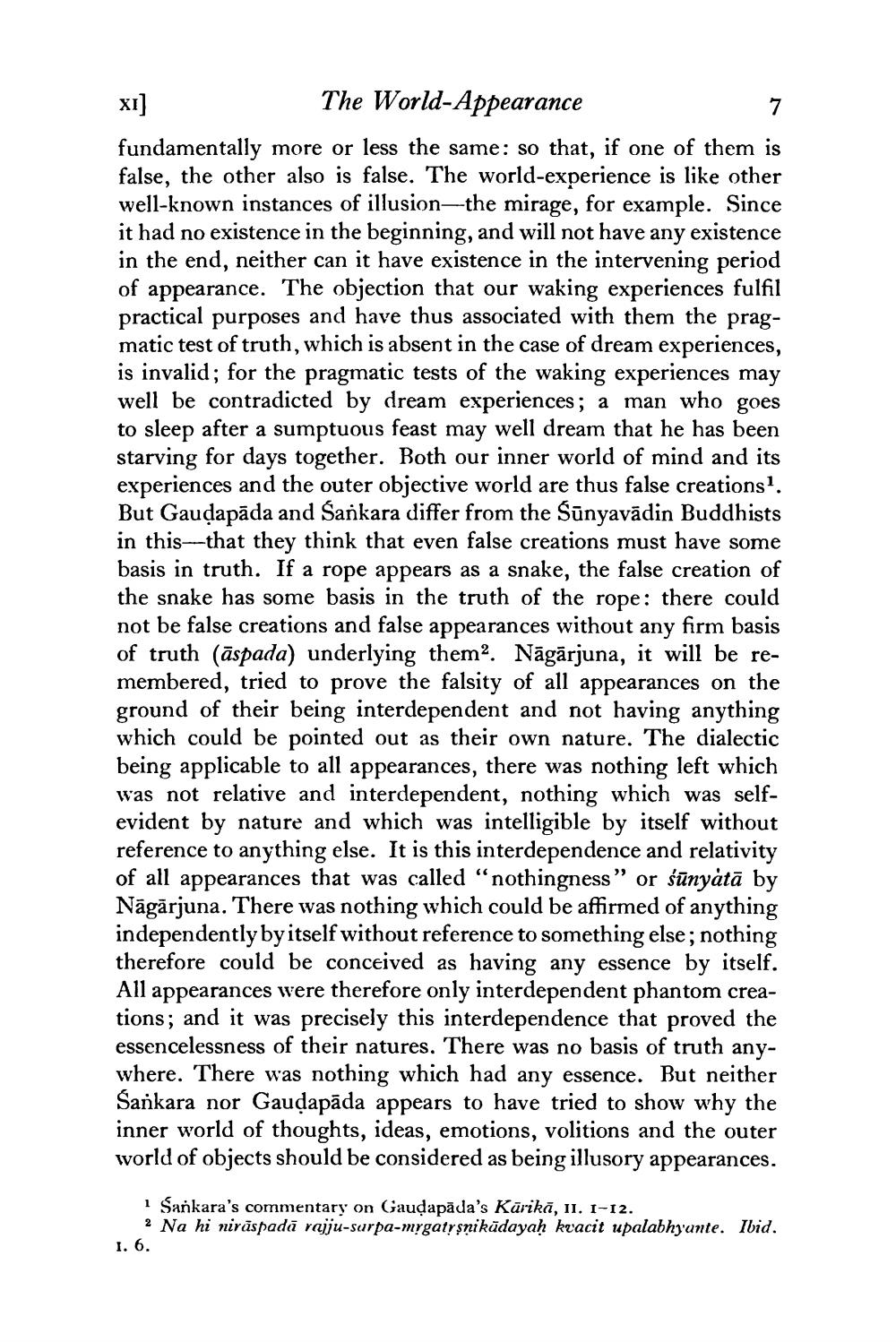________________
XI
The World-Appearance fundamentally more or less the same: so that, if one of them is false, the other also is false. The world-experience is like other well-known instances of illusion--the mirage, for example. Since it had no existence in the beginning, and will not have any existence in the end, neither can it have existence in the intervening period of appearance. The objection that our waking experiences fulfil practical purposes and have thus associated with them the pragmatic test of truth, which is absent in the case of dream experiences, is invalid; for the pragmatic tests of the waking experiences may well be contradicted by dream experiences; a man who goes to sleep after a sumptuous feast may well dream that he has been starving for days together. Both our inner world of mind and its experiences and the outer objective world are thus false creations?. But Gaudapāda and Sankara differ from the Sūnyavādin Buddhists in this--that they think that even false creations must have some basis in truth. If a rope appears as a snake, the false creation of the snake has some basis in the truth of the rope: there could not be false creations and false appearances without any firm basis of truth (āspada) underlying them. Nāgārjuna, it will be remembered, tried to prove the falsity of all appearances on the ground of their being interdependent and not having anything which could be pointed out as their own nature. The dialectic being applicable to all appearances, there was nothing left which was not relative and interdependent, nothing which was selfevident by nature and which was intelligible by itself without reference to anything else. It is this interdependence and relativity of all appearances that was called "nothingness" or sūnyàtā by Nāgārjuna. There was nothing which could be affirmed of anything independently by itself without reference to something else; nothing therefore could be conceived as having any essence by itself. All appearances were therefore only interdependent phantom creations; and it was precisely this interdependence that proved the essencelessness of their natures. There was no basis of truth anywhere. There was nothing which had any essence. But neither Sankara nor Gaudapāda appears to have tried to show why the inner world of thoughts, ideas, emotions, volitions and the outer world of objects should be considered as being illusory appearances.
i Sankara's commentary on Gaudapāda's Kārikā, 11, 1-12.
? Na hi nirūspadā rajju-surpa-mrgatrsnikādayah kracit upalabhyante. Ibid. 1. 6.




